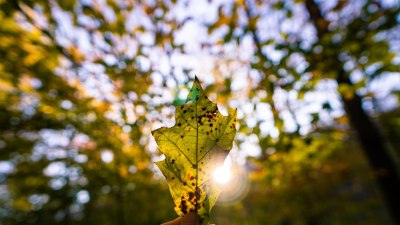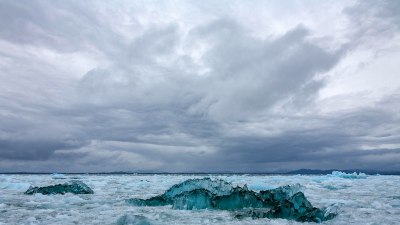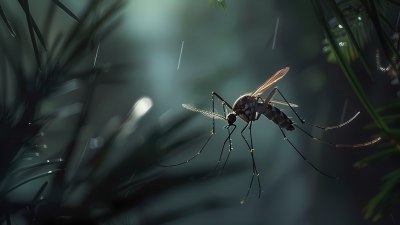Why Some Places Have Constant Drizzle
Explore the reasons behind constant drizzle in certain regions, from geography to climate patterns.

Image by KavindaDesign on Freepik
Constant drizzle may seem like a minor weather phenomenon, but it can have a profound effect on an area's ecosystem, agriculture, and lifestyle. Understanding why some places experience this incessant moisture requires a dive into various climatic, geographical, and meteorological factors. Here, we explore the underlying reasons for the incessant drizzle observed in select regions around the world.
Geographical Influences
The geography of an area significantly affects its weather patterns. Regions with coastal proximity often experience constant drizzle due to the moist air over oceans. As the warm air from the ocean meets cooler land, condensation occurs, resulting in light precipitation. Coastal areas tend to have milder temperatures, and their climates can be heavily influenced by the surrounding waters.
Ocean Currents
Ocean currents play a crucial role in regulating climate and weather. For example, the California Current, which flows southward along the Pacific coast, brings cooler waters that contribute to fog and drizzle in coastal California. In contrast, the Gulf Stream warms the Atlantic, leading to different precipitation patterns. These currents help transport moisture-laden air, influencing areas far removed from the ocean.
Topography and Rain Shadow Effect
Topography also plays a vital role in weather patterns. Mountains can significantly influence precipitation through a phenomenon known as the 'rain shadow effect.' When moist air encounters a mountain range, it is forced to rise, cool, and condense, resulting in rainfall on the windward side. However, once the air descends on the leeward side, it warms up and becomes drier, often leading to less precipitation and, in some cases, arid conditions. While the windward side may enjoy regular rain, the leeward side may experience drought.
Humidity Levels
Regions characterized by high humidity levels are more likely to experience constant drizzle. Warm air can hold more moisture than cold air, meaning areas with consistently warm temperatures are often muddled with high humidity. When the air's capacity is exceeded, it leads to persistent light rain, often known as drizzle. Places located near the equator, such as parts of Southeast Asia, experience high humidity year-round, making drizzly conditions quite common.
Climate Zones
The climate zones surrounding the planet also provide insight into why certain areas remain drizzly. Regions classified as maritime climates, typically found near oceans and large water bodies, often experience moderate temperatures and relatively consistent precipitation. These areas exhibit a strong relationship with the ocean, leading to frequent light rains. Similarly, temperate rainforest regions, like the Pacific Northwest of the United States, encounter moist air currents from the ocean, creating a habitat perfect for continuous drizzle.
Frontal Systems
Weather fronts are pivotal in understanding drizzle. A frontal system occurs where two different air masses meet. When a warm, moist air mass collides with a cooler, denser one, it causes the warmer air to rise, leading to cloud formation and potential precipitation. In regions where these fronts frequently pass, light but persistent drizzle is common. This is particularly observed in transitional seasonal climates where fronts can linger, creating extended periods of dampness.
Seasonal Variations
Seasonality can also contribute to persistent drizzle. In certain regions, specific seasons bring increased rainfall due to changes in atmospheric patterns. For instance, during the winter months, some areas may experience frequent oceanic storm systems that linger and produce light and constant drizzle, while summers are typically drier. The seasonal climate variations make certain areas synonymous with incessant drizzle.
Impact on Ecosystems
Constant drizzle significantly affects local ecosystems. The regular supply of moisture creates ideal conditions for lush vegetation to thrive. Places such as temperate rainforests host diverse flora and fauna that adapt to the moist environment, establishing unique habitats. Additionally, regions experiencing constant drizzle often rely on this precipitation for agriculture, where consistent moisture is vital for crop growth and sustenance.
Human Adaptation
Human culture and lifestyles adapt to the constant drizzle in various ways. For instance, in areas such as Seattle, Washington, and Bergen, Norway, locals develop urban infrastructure that accommodates the damp conditions. Buildings may feature angled roofs to direct rainwater away, while outdoor activities are planned considering the inevitability of rain. Cultural juxtaposition of lifestyles can often reflect sensible adaptations to the automatic presence of incessant drizzle.
Future Climate Changes
The future impacts of climate change on drizzle-prone regions remain a topic of concern. As temperatures rise globally, areas that rely on consistent moisture may experience unpredictable variations. Climate change can lead to alterations in precipitation patterns, potentially resulting in an increase or decrease in drizzle instances. Transitioning climates may call for adaptations in agriculture, urban planning, and water resource management, especially in regions heavily reliant on their habitual drizzling conditions.
In summary, understanding why some places have constant drizzle comes down to their geography, proximity to oceans, ocean currents, humidity, climate zones, and topography. From the rainforests of the Pacific Northwest to coastal European cities, the phenomenon showcases the complexities of weather and its influence on the environment. As climates change and ecosystems adapt, constant drizzle will continue to shape how humans engage with and understand their environment.











